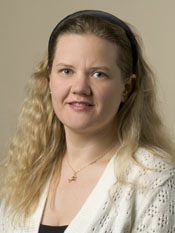Program Information
SRT II: Uncertainties in SRT

S Dieterich
D Schlesinger
S Geneser
S Dieterich1*, D Schlesinger2*, S Geneser3*, (1) UC Davis Medical Center, Sacramento, CA, (2) University of Virginia Health Systems, Charlottesville, VA, (3) University of California San Francisco, San Francisco, CA
Presentations
WE-B-19A-1 Wednesday 8:30AM - 9:30AM Room: 19ASRS delivery has undergone major technical changes in the last decade, transitioning from predominantly frame-based treatment delivery to image-guided, frameless SRS. It is important for medical physicists working in SRS to understand the magnitude and sources of uncertainty involved in delivering SRS treatments for a multitude of technologies (Gamma Knife, CyberKnife, linac-based SRS and protons). Sources of SRS planning and delivery uncertainty include dose calculation, dose fusion, and intra- and inter-fraction motion. Dose calculations for small fields are particularly difficult because of the lack of electronic equilibrium and greater effect of inhomogeneities within and near the PTV. Going frameless introduces greater setup uncertainties that allows for potentially increased intra- and interfraction motion, The increased use of multiple imaging modalities to determine the tumor volume, necessitates (deformable) image and contour fusion, and the resulting uncertainties introduced in the image registration process further contribute to overall treatment planning uncertainties. Each of these uncertainties must be quantified and their impact on treatment delivery accuracy understood. If necessary, the uncertainties may then be accounted for during treatment planning either through techniques to make the uncertainty explicit, or by the appropriate addition of PTV margins. Further complicating matters, the statistics of 1-5 fraction SRS treatments differ from traditional margin recipes relying on Poisson statistics. In this session, we will discuss uncertainties introduced during each step of the SRS treatment planning and delivery process and present margin recipes to appropriately account for such uncertainties.
Learning Objectives:
1.To understand the major contributors to the total delivery uncertainty in SRS for Gamma Knife, CyberKnife, and linac-based SRS.
2.Learn the various uncertainties introduced by image fusion, deformable image registration, and contouring variation.
3.Learn a variety of strategies for dealing with uncertainty, including margin recipes and explicit visualization of uncertainty. Understand how the assessment of PTV margins differs from regular fractionation (van Herk recipe) for 1-5 fraction deliveries.
Funding Support, Disclosures, and Conflict of Interest: David Schlesinger has received research support from Elekta.
Handouts
- 90-25514-333462-102894.pdf (S Dieterich)
- 90-25515-333462-104527.pdf (S Geneser)
- 90-25584-333462-102613.pdf (D Schlesinger)
Contact Email:




